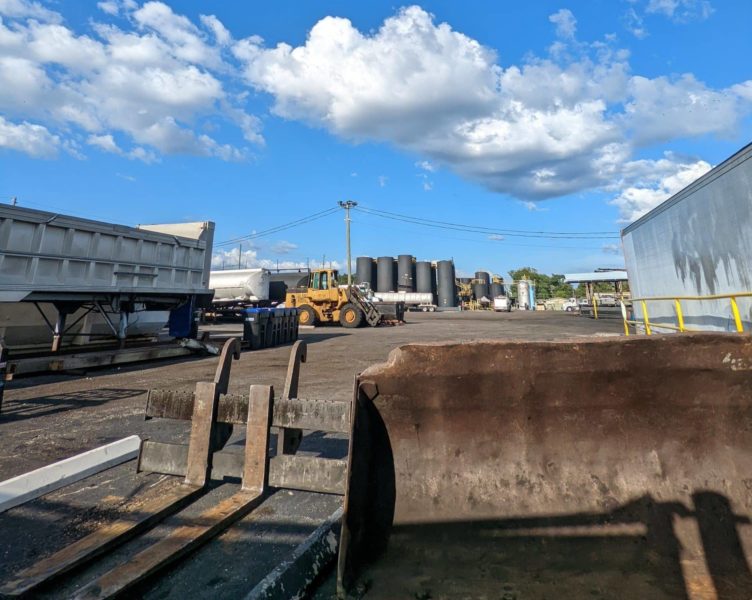Thrive
Local agency unveils vast clean air initiative

Researchers have estimated Tampa Bay’s greenhouse gas emissions for the first time as part of a $5 billion nationwide effort to reduce pollution and mitigate climate change.
The Tampa Bay Regional Planning Council (TBRPC) found that Hillsborough, Pinellas, Pasco and Hernando Counties produced 31.7 million metric tons of carbon dioxide equivalent in 2021. Greenhouse gases trap heat in the atmosphere, leading to increased temperatures, sea level rise and more frequent and intense storms.
The TBRPC recently unveiled its strategy to reduce harmful emissions, the Clean Air Tampa Bay Priority Action Plan. Congresswoman Kathy Castor and Janet McCabe, deputy administrator for the U.S. Environmental Protection Agency (EPA), discussed the ambitious initiative Wednesday afternoon at St. Petersburg’s Maritime and Defense Technology Hub.
“We know that low-income communities are especially vulnerable to the impacts of increasing climate change,” McCabe said. “Their housing is not as resilient; they are not as resilient.”
The TBRPC created the plan in partnership with the University of South Florida’s Patel College of Sustainability. The EPA provided a $1 million grant to document the area’s greenhouse gas emissions and discern solutions.
The Inflation Reduction Act provides $250 million in local government planning grants and $4.6 billion for implementation. McCabe credited Tampa Bay for embracing the vast initiative.
The TBRPC recently submitted the local draft plan to the EPA. It focuses on high-priority projects in the transportation and energy sectors, which accounted for 84% of the region’s emissions in 2021.
Processes used to create electricity, like burning natural gas in power plants, produced about 45% of Tampa Bay’s harmful emissions. Incentivizing people and organizations to utilize solar energy is one plan recommendation.
“I noticed, as we were driving around, how many homes have solar panels on them,” McCabe said. “It just seems like a no-brainer here in Florida. Thanks to Congress and the President, we have $7 billion coming in the Solar for All program.”

The University of South Florida St. Petersburg uses solar energy to power electric vehicle charging stations. Photo by Mark Parker.
She said the initiative will provide rooftop solar panels for homes in low-income neighborhoods. McCabe noted that those communities typically lack access to those “cost-saving and health-improving innovations.”
Castor said city officials in Tampa and St. Petersburg have discussed putting solar panels on community centers and fire and police stations. McCabe explained that those continue collecting radiant energy on cloudy days.
The transportation sector produced 43% of Tampa Bay’s greenhouse gases. TBRPC’s plan encourages governments to expand public transportation and incentivize people to buy electric vehicles.
Castor expects transit agencies, school districts and the U.S. Postal Service to continue electrifying fleets. McCabe said those efforts substantially reduce air pollution that “people in poor communities are exposed to every single day.”
“That contributes to higher rates of asthma, respiratory disease, heart disease, premature mortality, missed school days – all those things that affect their quality of life,” she added. “And it affects the economic vitality of those communities, as well.”
The report states that the region’s trees helped eliminate about 1.5 million metric tons of carbon dioxide equivalent. While that is just a fraction of the total output, St. Petersburg officials are working to increase the city’s tree canopy, which also helps lower temperatures.
USF researchers predict that Tampa Bay could reduce emissions by 63% if local leaders adopt the plan’s solutions. Pradeep Haldar, director of sustainable business, said in a prepared statement the status quo would result in “major climate-related consequences.”
Officials from the 36 local jurisdictions within the four-county region must review the plan by April 1 and identify steps they will take to reduce emissions to apply for a share of the $4.3 billion in EPA grants. Castor called Tampa and St. Petersburg leaders in local efforts to mitigate pollution.
McCabe expressed her excitement to see the “number of groups that have come together and the work that they’ve done to put together a comprehensive plan” in Tampa Bay. “This is what President (Joe) Biden wanted; it’s what the majority of Congress wanted when they passed that bill, and the EPA is thrilled to be a part of helping deliver that,” she added.
To view the plan, visit the website here.







